Discover the simplicity of 2-minute mindfulness exercises, designed to reduce stress and enhance focus. Perfect for busy schedules, these short practices promote calm and clarity in daily life.
What is Mindfulness?
Mindfulness is the practice of being fully present and engaged in the current moment, while cultivating a non-judgmental awareness of one’s thoughts, feelings, and bodily sensations. It involves paying attention to experiences with curiosity and openness, without trying to change or react to them. Rooted in ancient meditation traditions, mindfulness has evolved into a secular tool for improving mental and emotional well-being. By focusing on the here and now, individuals can reduce stress, enhance clarity, and foster a deeper connection to their inner selves. Regular mindfulness exercises, even as short as two minutes, can lead to greater self-awareness and emotional regulation in daily life.
Benefits of Short Mindfulness Practices
Short mindfulness practices offer numerous benefits, including reduced stress and anxiety, improved focus, and enhanced emotional well-being. Even brief exercises can lower cortisol levels, promoting relaxation and clarity. Mindfulness boosts productivity by improving concentration and reducing mind-wandering. It also fosters a positive outlook by encouraging gratitude and self-compassion. Regular short practices can create a sense of calm and resilience, helping individuals navigate life’s challenges more effectively. These exercises are accessible, requiring minimal time yet yielding significant mental and emotional rewards, making them a valuable addition to daily routines for overall well-being and personal growth.
Why 2 Minutes?
The 2-minute timeframe is ideal for mindfulness as it’s short enough to fit into any schedule, making it accessible and sustainable. This brief duration reduces intimidation, encouraging consistency. It allows the mind to settle quickly, providing immediate stress relief and focus. Two minutes is sufficient to observe breath, body sensations, or gratitude, offering a mental pause. Regular practice enhances emotional resilience and clarity without requiring significant time commitment. It’s a practical yet powerful way to incorporate mindfulness into daily life, fostering calm and awareness with minimal effort, making it easier to maintain as a regular habit for improved well-being. This concise practice is both effective and manageable, ensuring long-term benefits.
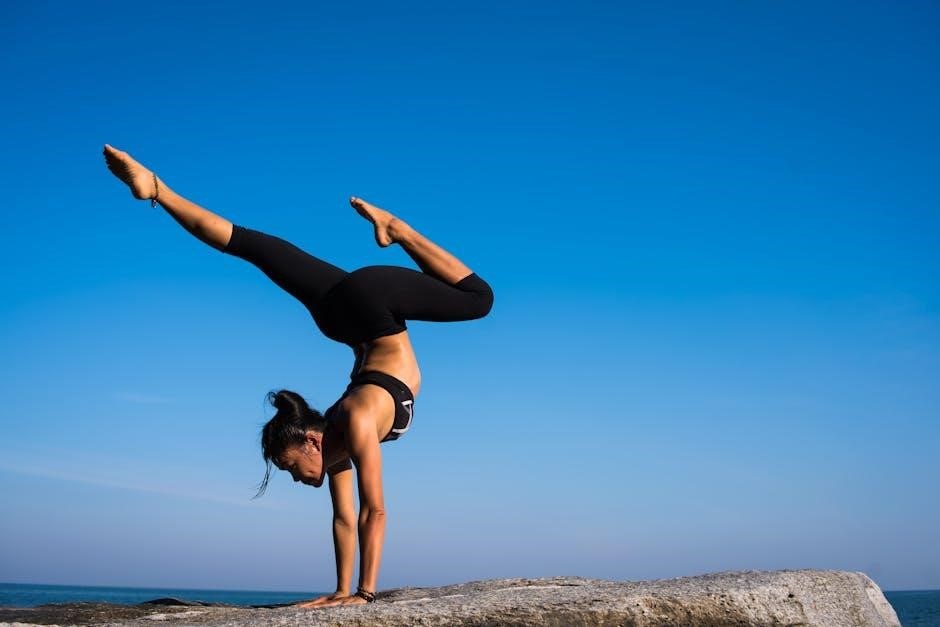
Preparing for the Exercise
Find a quiet, comfortable space to minimize distractions. Sit or stand with ease, close your eyes, and set an intention to focus on the present moment.
Finding a Quiet and Comfortable Space
Creating the right environment is key to an effective mindfulness practice. Identify a quiet, distraction-free area where you can sit or stand comfortably. Choose a spot away from noise, such as a corner in your home or office. Ensure the space is free from interruptions, allowing you to focus fully on your breath and presence. Consider using headphones or calming music to enhance the experience. Sit with your back straight, feet planted firmly on the ground, and hands placed gently on your lap or knees. Close your eyes or soften your gaze, letting go of external distractions. This setup helps you transition into a mindful state effortlessly, making the most of your 2-minute practice.
Setting Intentions for the Practice
Before beginning your 2-minute mindfulness exercise, take a moment to set clear intentions. Define what you hope to achieve, whether it’s reducing stress, improving focus, or cultivating gratitude. This step helps anchor your practice and ensures a purposeful experience. Close your eyes and silently state your intention, such as, “I intend to let go of distractions and stay present.” This simple act creates clarity and direction, allowing you to fully engage with the exercise. Remember, your intention is personal and can evolve with each practice. By setting intentions, you establish a mindful foundation, making your 2-minute exercise more impactful and meaningful.

Core Exercises for the 2-Minute Mindfulness Practice
These exercises include mindful breathing, body scans, and gratitude reflections. Each focuses on present-moment awareness, helping to reduce stress and improve focus in just two minutes.
Mindful Breathing: Focus on the Breath
Mindful breathing is a cornerstone of 2-minute mindfulness exercises. To begin, find a comfortable position and close your eyes. Take a deep breath in through your nose, focusing on the sensation of the air entering your body. Hold it for a brief moment, then exhale slowly through your mouth, letting go of any tension. Continue this pattern, paying attention to the rise and fall of your chest or the sensation of breath in your nostrils. If your mind wanders, gently bring your focus back to the breath. This practice helps calm the mind, reduce stress, and improve concentration, making it an ideal starting point for mindfulness beginners.
Body Scan: Awareness of Physical Sensations
A body scan is a powerful mindfulness exercise that cultivates awareness of physical sensations. Begin by sitting or lying down comfortably, closing your eyes. Bring your attention to your toes, noticing any sensations—tingling, heaviness, or relaxation. Gradually scan upward, focusing on each body part in turn: feet, calves, knees, thighs, hips, abdomen, chest, shoulders, arms, hands, neck, and head. Pause briefly on areas of tension or discomfort, breathing deeply to release them. This practice enhances bodily awareness, reduces physical stress, and promotes relaxation. By dedicating just two minutes to this exercise, you can reconnect with your body and foster a sense of calm and well-being. Regular practice strengthens your ability to recognize and manage physical sensations mindfully.
Gratitude Reflection: Focusing on Positivity
Gratitude reflection is a mindfulness practice that shifts focus to the positive aspects of life. Begin by finding a quiet, comfortable space and closing your eyes. Take a few deep breaths to center your mind. Reflect on things you are grateful for—people, experiences, or simple joys. Consider how these elements enrich your life and evoke positive emotions. This exercise fosters a sense of well-being and appreciation, helping to cultivate optimism. By dedicating two minutes daily to gratitude, you can reframe your mindset, enhance emotional resilience, and improve overall life satisfaction. Regular practice strengthens your ability to recognize and cherish life’s positive moments, promoting a more balanced and fulfilling existence.

Tips for Effective Practice
Set clear intentions, practice consistently, and create a quiet space. Use guided scripts or apps for structure. End each session mindfully to transition smoothly.
Starting and Ending Your Workday with Mindfulness
Begin your day with a 2-minute mindfulness practice to set a positive tone. Sit comfortably, close your eyes, and focus on deep breaths. This helps clear your mind and prepare for tasks ahead.
At the end of your workday, repeat the practice to create a clear boundary between work and personal life. Reflect on accomplishments and release any stress. This ritual fosters balance and relaxation.
Consistency is key. Use a guided script or timer to stay focused. Over time, this practice will become a seamless part of your routine, enhancing overall well-being.
Incorporating Mindfulness into Meetings
Enhance meeting productivity by introducing a 2-minute mindfulness practice. Begin by guiding the team in a brief breathing exercise to encourage focus and calm.
This practice helps participants transition from distractions to the present moment, fostering collaboration. Use a mindfulness script to lead the group in observing their breath or body sensations.
End the practice with a moment of gratitude or a mindful observation to set a positive tone. Regular mindfulness in meetings can improve communication and decision-making, creating a more intentional work environment.
Using Mindfulness for Work-Life Balance
2-minute mindfulness exercises are a powerful tool for achieving work-life balance. By dedicating just two minutes at the start or end of your workday, you can create a clear boundary between professional and personal life.
Practice mindful breathing or gratitude reflection to transition smoothly. This brief pause helps reduce stress and rejuvenates your mind, allowing you to approach personal time with greater calm and presence.
Regular mindfulness practice fosters emotional well-being and clarity, making it easier to balance responsibilities and enjoy personal moments fully. Incorporate this simple habit to enhance your overall quality of life.
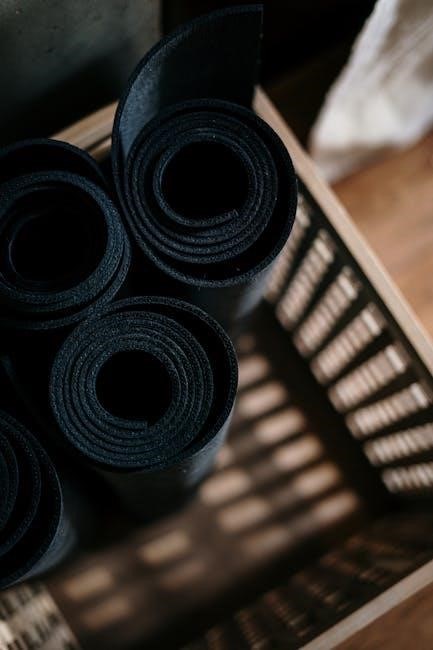
Benefits of Regular 2-Minute Mindfulness
Regular 2-minute mindfulness practices reduce stress, improve focus, and enhance emotional well-being. These short exercises foster clarity and calm, benefiting both personal and professional life effectively.
Reducing Stress and Anxiety
2-minute mindfulness exercises are a powerful tool for reducing stress and anxiety. By focusing on deep breathing and physical sensations, these practices create a mental break from daily stressors. Mindful breathing helps calm the nervous system, while body scans increase awareness of tension, allowing for release. Regular practice fosters resilience, making it easier to manage challenging situations. The short duration makes it accessible, even during busy days, ensuring consistent stress reduction. Over time, these exercises improve emotional health, helping individuals respond to stressors with greater clarity and calmness, ultimately enhancing overall well-being and daily functioning.
Improving Focus and Productivity
Mindfulness exercises, even as short as two minutes, significantly enhance focus and productivity. By training the mind to stay present, these practices reduce distractions and improve concentration. Regular mindfulness sessions sharpen attention, allowing individuals to complete tasks more efficiently. The clarity gained from mindful breathing and body scans translates to better decision-making and problem-solving skills. Incorporating these exercises into daily routines, such as before work or during breaks, boosts mental clarity and energy. Over time, mindfulness practice fosters a more disciplined and focused mindset, leading to greater productivity and success in both personal and professional realms. It’s a simple yet effective way to stay mentally sharp and achieve goals.
Enhancing Emotional Well-being
Regular 2-minute mindfulness practices significantly enhance emotional well-being by fostering self-awareness and emotional regulation. These exercises help individuals recognize and manage emotions, reducing stress and anxiety. By focusing on gratitude and positivity, mindfulness cultivates a more optimistic outlook, improving mental health. Even brief periods of mindful breathing or body scans can calm the mind, reducing emotional overwhelm. Over time, mindfulness practice strengthens resilience, enabling better handling of life’s challenges. It encourages acceptance and compassion, promoting emotional balance and harmony. Incorporating these exercises into daily routines supports long-term emotional well-being, creating a foundation for a happier, more fulfilling life. Mindfulness is a powerful tool for nurturing emotional health.
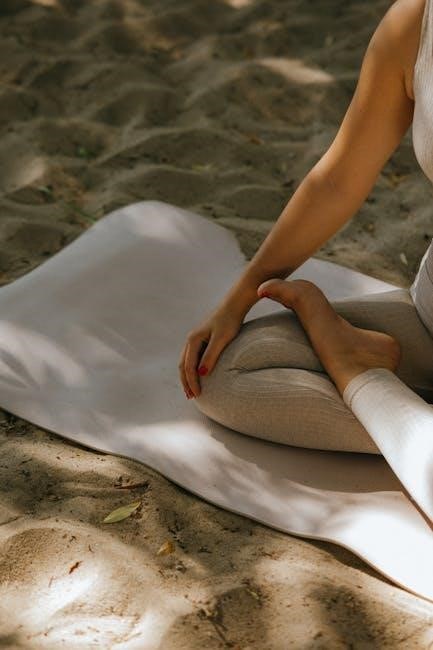
Creating a Printable 2-Minute Mindfulness Guide
Design a PDF guide with clear instructions, visuals, and prompts. Ensure it’s easy to follow, helping users practice mindfulness efficiently. Perfect for daily use.
Designing a PDF for Easy Reference
A well-designed PDF guide is essential for easy reference during mindfulness exercises. Start by creating a clean layout with clear headings and concise instructions; Use bullet points or numbered lists to break down steps, making the content easily scannable. Incorporate visuals such as diagrams or icons to illustrate key concepts, like breathing techniques or body scans. Ensure the text is large enough for readability and that the design is minimalist to avoid distractions. Include prompts or reminders to help users stay focused during their practice. Finally, save the PDF in a widely compatible format and consider adding bookmarks for quick navigation. This will make the guide a practical tool for daily mindfulness routines.
Including Visual Reminders and Prompts
Enhance your mindfulness PDF with visual reminders and prompts to guide users through exercises. Use images of nature, calming colors, or simple icons to create a soothing atmosphere. Incorporate diagrams for breathing techniques or body scans, helping users visualize each step. Add inspirational quotes or mantras to reinforce positive thinking. Include checklists or progress trackers to encourage consistency. Use arrows or numbered sequences to illustrate movement or flow, ensuring the content is intuitive. Keep visuals minimal and relevant to avoid distraction. These elements will make the guide engaging and user-friendly, fostering a deeper mindfulness practice. Visual cues can also serve as quick reminders for daily exercises, making mindfulness more accessible and sustainable.
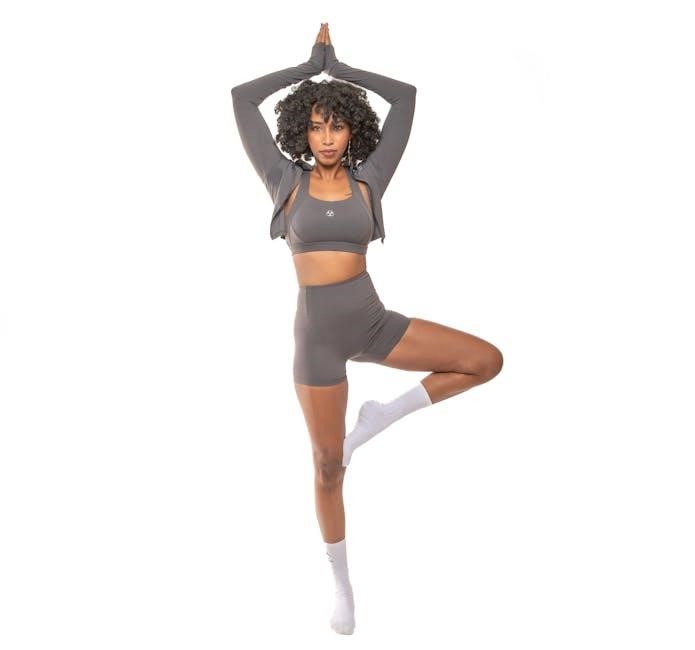
Real-Life Applications of the Exercise
Mindfulness exercises are widely used in workplaces, schools, and personal routines to reduce stress, improve focus, and enhance emotional well-being, making them versatile tools for daily life.

Using Mindfulness in the Workplace

Mindfulness exercises are increasingly being adopted in professional settings to enhance productivity and well-being. A 2-minute mindfulness practice can be incorporated into morning handovers or before meetings to foster clarity and calm. Many companies encourage employees to take short mindfulness breaks between tasks to reduce stress and improve focus. For example, starting the workday with mindful breathing or ending it with a gratitude reflection helps create a balanced work-life transition. These practices not only boost individual performance but also cultivate a more mindful and collaborative team environment, leading to better decision-making and overall job satisfaction. Regular mindfulness exercises in the workplace can significantly contribute to a healthier and more productive organizational culture.
Practicing Mindfulness with Students
Introducing mindfulness to students can have a profound impact on their emotional and academic well-being. Teachers are increasingly incorporating 2-minute mindfulness exercises into daily routines, such as during morning meetings or transitions. These brief practices, like mindful breathing or body scans, help students develop self-awareness and calmness. For example, guiding students to focus on their breath or observe their surroundings fosters a sense of present-moment awareness. Such exercises not only improve focus and reduce stress but also create a more positive classroom environment. Many educators report improved student behavior and emotional regulation after consistent mindfulness practice. This simple yet effective approach empowers students to manage challenges and thrive both in and out of the classroom.
Mindfulness for Personal Growth
2-minute mindfulness exercises are a powerful tool for personal growth, fostering self-awareness and emotional well-being. By dedicating just two minutes daily to practices like mindful breathing or gratitude reflection, individuals can cultivate a deeper connection to their thoughts and emotions. These exercises encourage introspection, helping to clarify personal values and goals. Regular mindfulness practice enhances self-compassion, resilience, and the ability to navigate life’s challenges with clarity. Over time, this consistent yet brief commitment can lead to profound shifts in perspective, empowering individuals to embrace growth and live more intentionally. The simplicity of these exercises makes them accessible, even for those with busy schedules, ensuring personal development remains a priority.
2-minute mindfulness exercises offer a simple yet powerful way to reduce stress, improve focus, and enhance well-being. Start your journey today for a calmer, more mindful life.
Encouragement to Start the Practice
Embrace the power of 2-minute mindfulness to transform your day. These short exercises are easy to incorporate, even for beginners, and offer profound benefits like reduced stress and improved focus. Consistency is key—commit to just two minutes daily and watch your mental clarity and emotional resilience grow. Start with guided scripts or apps to help you stay on track. Remember, mindfulness is not about perfection but about showing up for yourself. By dedicating just two minutes each day, you invest in a healthier, happier you. Take the first step today and experience the positive impact of mindfulness in your life.
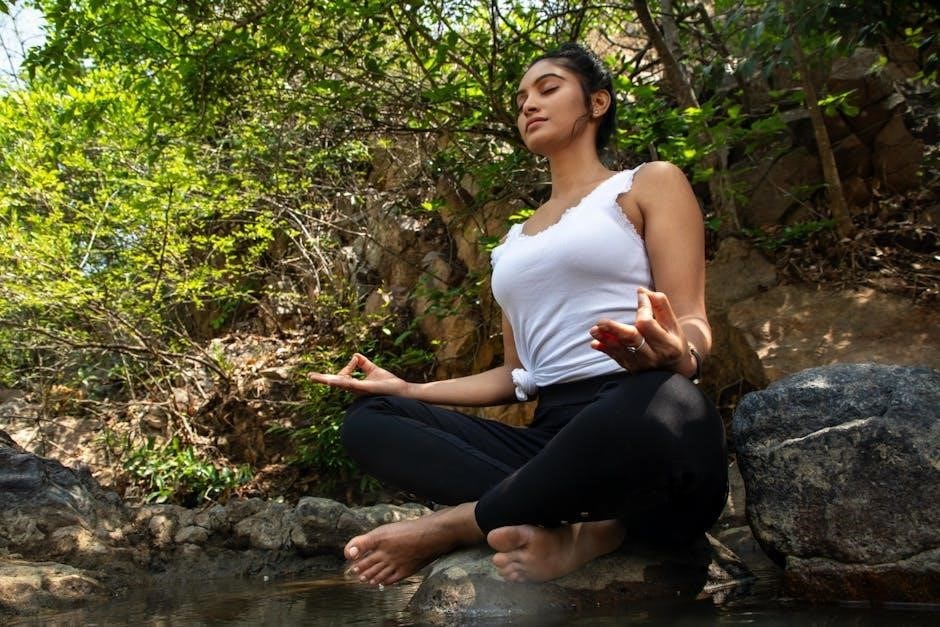
Final Thoughts on the Importance of Mindfulness
Mindfulness is a powerful tool for creating lasting change in both personal and professional spheres. By dedicating just two minutes a day, individuals can cultivate greater self-awareness, reduce stress, and enhance their overall well-being. The practice not only improves mental clarity but also fosters emotional resilience, allowing people to navigate life’s challenges with grace. Incorporating mindfulness into daily routines, such as during work breaks or before meetings, can lead to a more balanced and fulfilling life. As mindfulness becomes a habit, its benefits extend beyond the individual, positively impacting relationships and communities. Embrace mindfulness as a lifelong journey toward greater peace and harmony.

No Responses